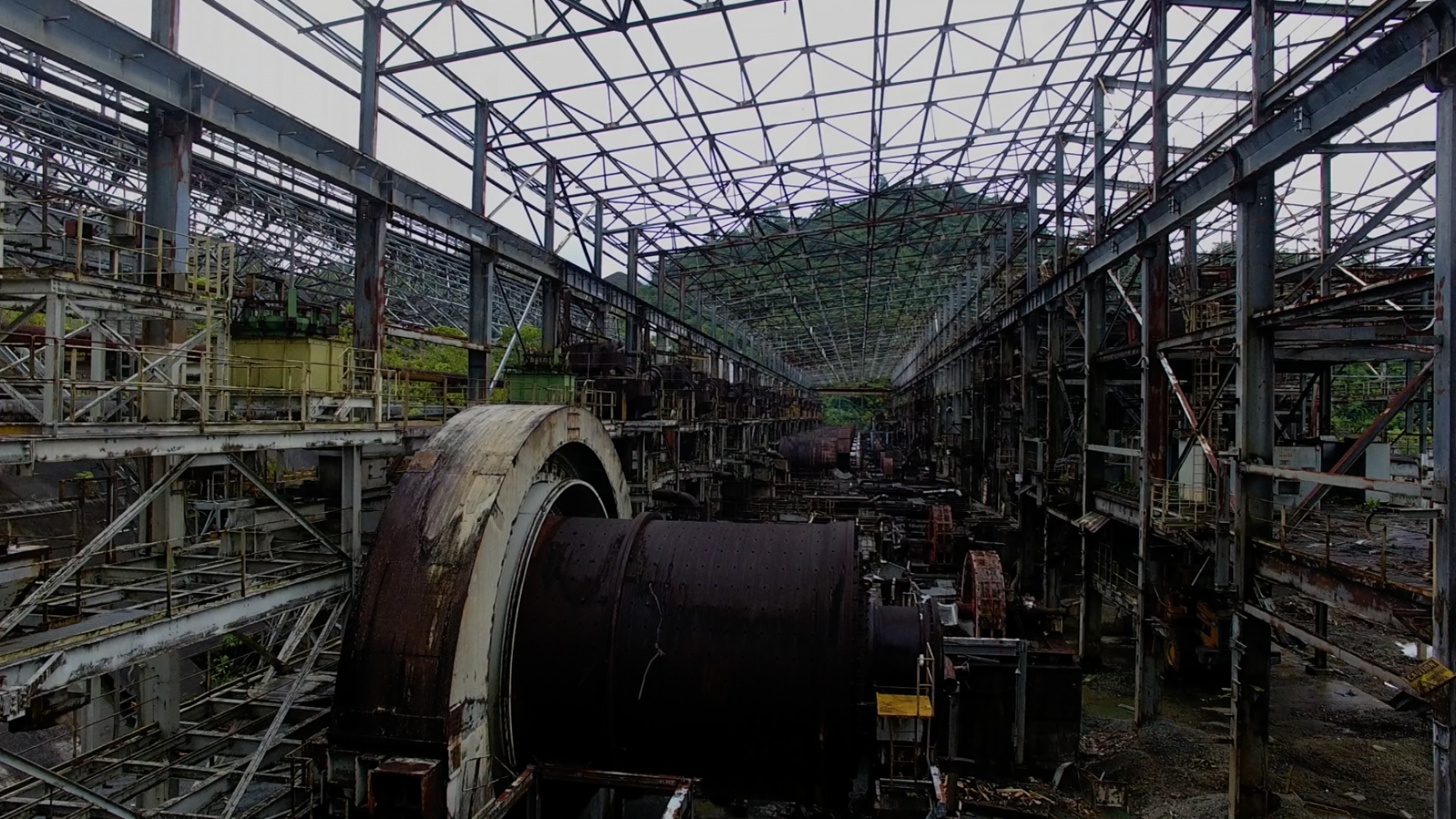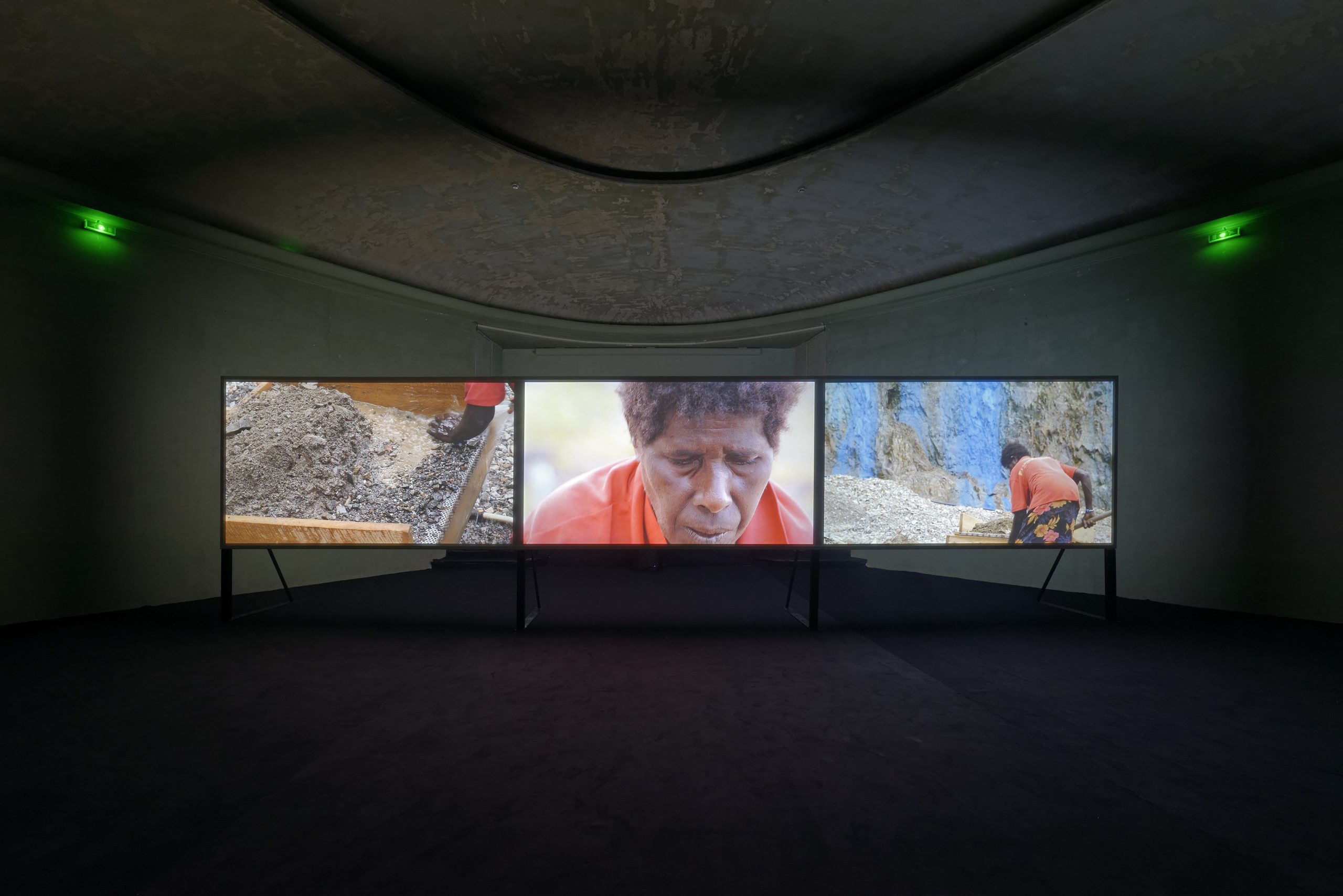Artists
Taloi Havini
Taloi Havini (Nakas Tribe Hakö, born in Arawa, Autonomous Region of Bougainville, Papua New Guinea; lives in Sydney, Australia) is interested in the sociopolitical history of Bougainville. Her ongoing investigation into the expanding environmental degradation of her birthplace is shown through the multi-channel video installations in her Habitat series. Havini employs a research practice concerned with her Indigenous matrilineal ties to her land and community in Bougainville. She delves into personal experiences impacted by the ongoing legacy of colonial resource extraction and the broader political issues of nation building in the Pacific region. Through immersive video, installation, photography, and sculpture, she seeks to articulate different ways of being connected with nature.
- Born
- Arawa, Autonomous Region of Bougainville, Papua New Guinea
- Countries / Nations
- Nakas Tribe Hakö, Autonomous Region of Bougainville, Papua New Guinea / Australia
- Lives
- Sydney, Australia
- Website
- taloihavini.com
Works

Taloi Havini, Habitat, 2017, 2017, video still. Courtesy of the artist

Taloi Havini, Habitat, 2017, 2017, installation view, Palais de Tokyo, 2017. Courtesy of the artist
Of the Land
The triptych Habitat 2017 focuses on the disused Panguna copper mine in Havini’s hometown. The work features aerial points of view of the region, revealing tributaries eroded by residual toxins and tumble-down infrastructure that has been abandoned for decades. At a more intimate scale, we meet Agata, a woman who prospects for gold in this devastated ecosystem. We see her panning sediments at the foot of a cliff striated with light blue – the colour created by contact between copper sulphate and water. Winding through stretches of bog, the ruins of the Panguna mine testify to 17 years of activity, between 1972 and 1989, that produced more than a billion tons of mining waste. This residue, a lethal heritage for generations, continues to disrupt the lives of thousands of people who live downstream of the rivers in which the poisonous materials were deposited. Thirty years later, the region still hasn’t been cleaned up. Habitat 2017 addresses the humanmade ecological issues related to the extractivist agenda that shaped the landscape of Bougainville, bringing to the foreground people and stories previously obscured by the horrendous damage caused by the mine. With Agata’s gold-panning enterprise, Havini brings to light an artisanal mining practice by which more than 40 million people all over the world earn their daily bread. The work compresses temporalities, pulling the memory of past violence into the present through the traces that it has left behind. Habitat 2017 makes sure we stay aware of the issues around extraction and exploitation; but, above all, it holds up the courage of the people who, over time, have dared to oppose them.